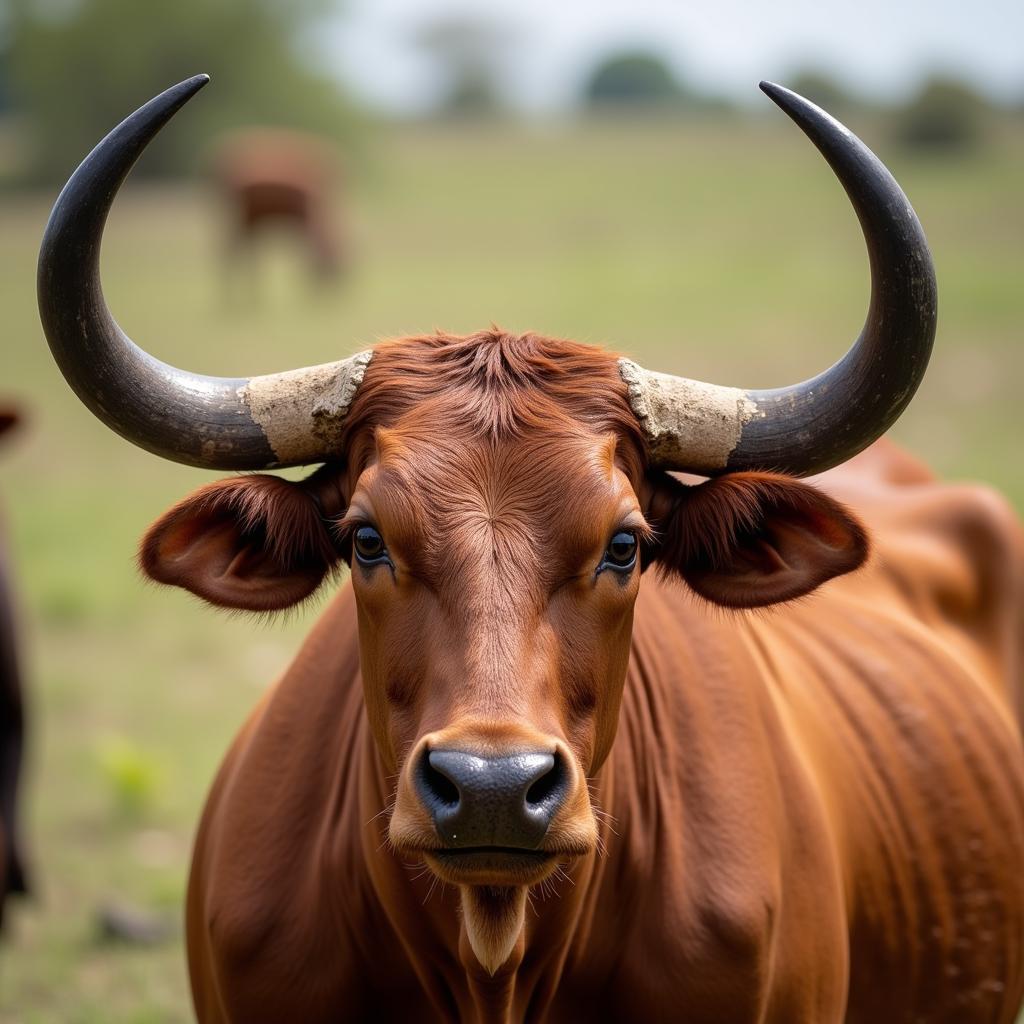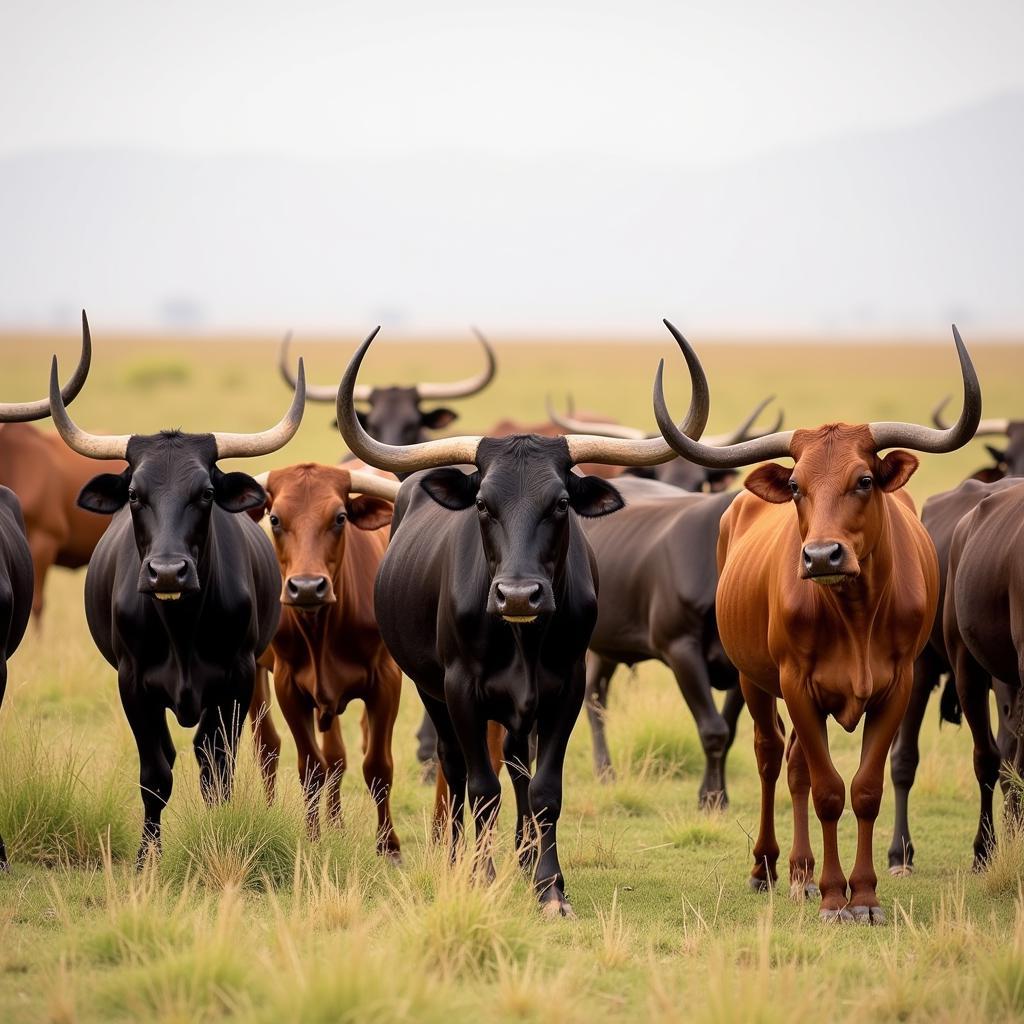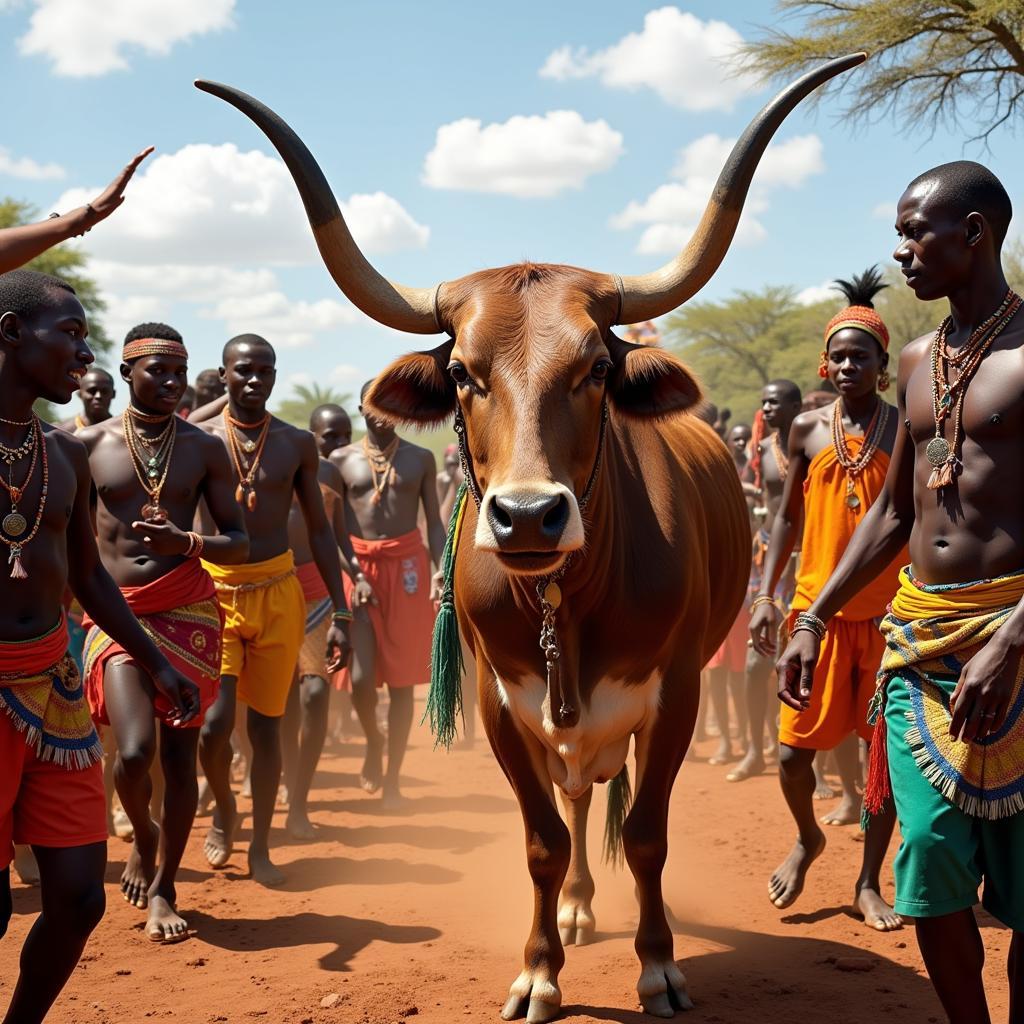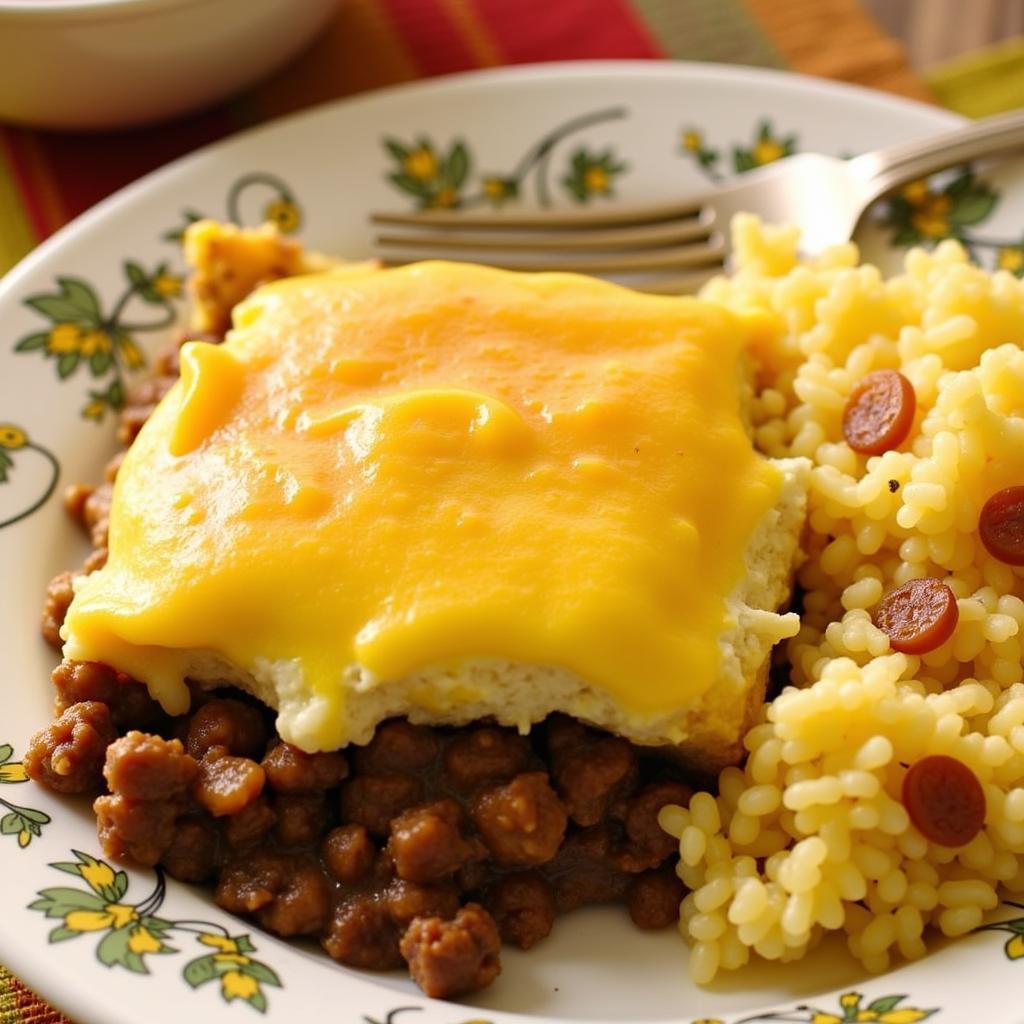Majestic African Cows With Long Horns
African Cows With Long Horns are a captivating sight, embodying the continent’s wild beauty and diverse wildlife. These magnificent creatures, often adorned with impressive horns that seem to defy gravity, are integral to the African landscape and culture. Let’s delve into the fascinating world of these iconic animals, exploring their different breeds, unique adaptations, and significance to the people of Africa.
 Ankole-Watusi cow with massive horns
Ankole-Watusi cow with massive horns
A Tapestry of Breeds: From Ankole-Watusi to Texas Longhorns
While the phrase “African cows with long horns” might conjure a single image, it encompasses a variety of breeds, each with distinct characteristics and origins. Among the most renowned are:
-
Ankole-Watusi: Hailing from East Africa, Ankole-Watusi cattle are famed for their colossal horns that can reach up to 8 feet in width. These horns are not just for show; they serve as thermoregulators, helping the cattle dissipate heat in the scorching African sun.
-
Texas Longhorns: Though now synonymous with the American West, Texas Longhorns trace their ancestry back to African cattle brought over by Spanish explorers. Their lengthy horns, reaching lengths of over 6 feet, were crucial for defense against predators in the open range.
-
Afrikaner Cattle: Originating in South Africa, Afrikaner cattle are recognized for their hardiness and adaptability to arid environments. Their long, lyre-shaped horns are a distinctive feature, adding to their imposing presence.
-
Sanga Cattle: Believed to be the ancestors of many African breeds, Sanga cattle are characterized by their large size and impressive hump over the shoulders. Their horns vary in shape and size but are often quite substantial, reflecting their evolutionary journey in the African savanna.
 Various African cattle breeds with long horns grazing
Various African cattle breeds with long horns grazing
Horns of Distinction: A Symbol of Status and Survival
The long horns of these African cattle are more than just striking features; they play a vital role in their survival and social structure. These horns serve multiple purposes, including:
-
Thermoregulation: As mentioned earlier, the large surface area of the horns allows for efficient heat dissipation, crucial for survival in hot climates.
-
Defense: The imposing horns act as formidable weapons against predators, deterring attacks and protecting the herd.
-
Social Hierarchy: Horn size often dictates dominance within the herd, with larger horns signifying higher status.
-
Acoustic Communication: Some researchers believe that the hollow horns might be used to amplify vocalizations, enhancing communication within the herd.
Cultural Significance: Beyond the Pasture
In many African cultures, cattle, particularly those with impressive horns, hold significant cultural and spiritual value. They represent wealth, prosperity, and social standing. Cattle are often:
-
Central to Traditional Ceremonies: Cattle play a crucial role in various rituals and celebrations, symbolizing fertility, abundance, and ancestral connections.
-
A Form of Currency: In some communities, cattle serve as a form of currency, used in dowry payments and to settle disputes.
-
A Source of Artistic Inspiration: The majestic forms of African cattle, particularly their horns, have inspired countless works of art, from traditional sculptures to contemporary paintings.
 An African tribal ceremony with cattle
An African tribal ceremony with cattle
The Future of African Cows With Long Horns
Despite their cultural importance and ecological significance, some African cattle breeds with long horns face challenges like habitat loss, disease, and crossbreeding. Conservation efforts are crucial to ensure the preservation of these magnificent animals for generations to come.
These efforts include:
-
Promoting Sustainable Breeding Practices: Encouraging responsible breeding programs that preserve the genetic diversity and unique traits of each breed is essential.
-
Protecting Natural Habitats: Conserving the grazing lands and ecosystems where these animals thrive is vital for their long-term survival.
-
Raising Awareness: Educating local communities and the global public about the importance of these cattle breeds and the threats they face is paramount.
By understanding the value of these animals—both ecological and cultural—we can help ensure that the African savanna continues to be graced by the presence of these magnificent creatures with their awe-inspiring horns.



